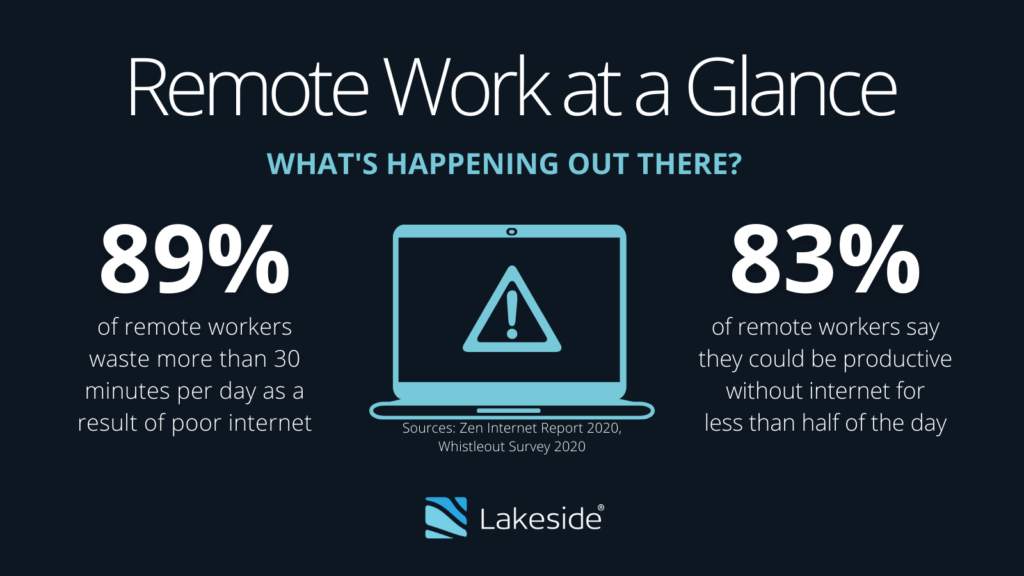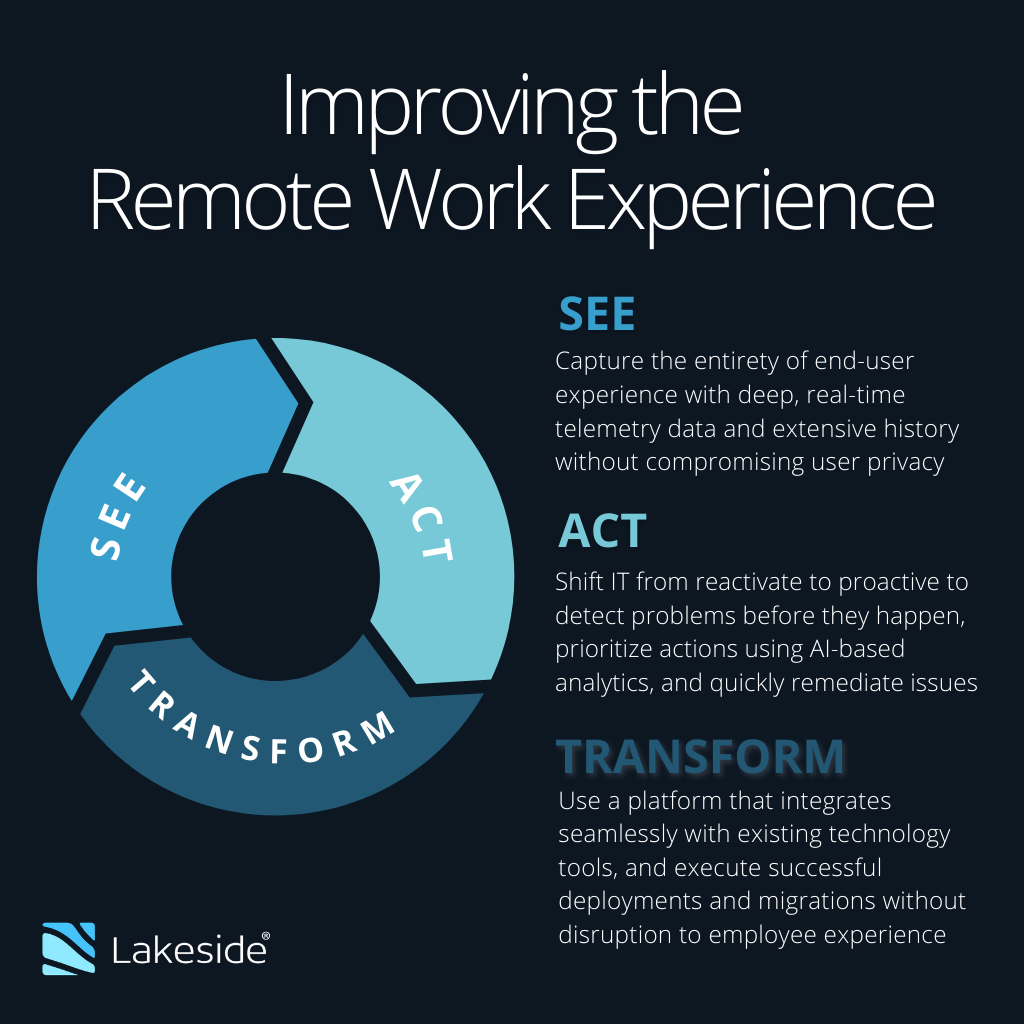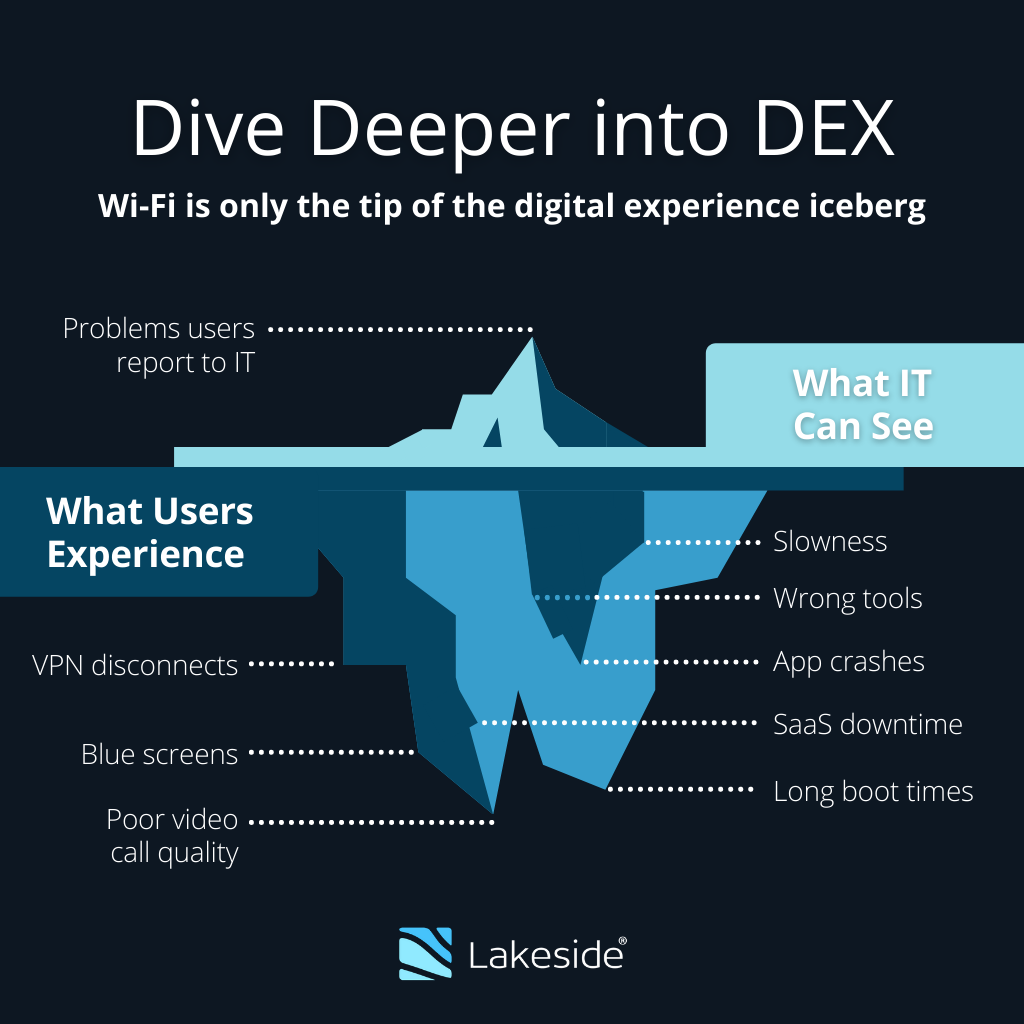How to Troubleshoot Home Wi-Fi Issues for a Remote Workforce

Keep remote workers securely connected and productive with digital experience monitoring
These days, the new office is the kitchen.
And the living room.
And the dining room.
Pretty much any spot where employees can log into corporate VPNs, hop on video calls, and use web apps to do their work from home.
There’s a potential problem, though. Even with all the best hardware and apps, there’s still a factor that can disrupt digital experiences and even put a stop to remote work productivity in an instant: The home network.
Although many dispersed employees have been working from home for almost a year now, troubleshooting home Wi-Fi issues still isn’t easy, according Lakeside’s Senior Director of Product Management Ben Murphy.
In “Detect & Engage: How to Help Users Overcome Home Wi-Fi Issues,” Lakeside Software’s breakout session during this year’s IGEL DISRUPT Unite virtual conference held on Feb. 25, Murphy walked through the challenge of addressing home internet problems when IT has little to no visibility outside corporate networks.
But the right set of solutions and strategies can help take a lot of the mystery out of connection troubles, as well as other remote work challenges.
Combining a secure, remote client-based solution — such as the IGEL OS — with powerful digital experience monitoring/management, for instance, can offer “a very clear-cut way to deal, or at least understand, some of the issues that (users may face) out in a remote environment,” Murphy noted.
Here are a few more insights from the session, now available on-demand.
Challenge of Home Networks
Good, high-quality connectivity is key to productive remote work. Without that, everything starts to grind to a halt.
A recent Zen Internet report shows 89% of remote workers waste more than 30 minutes per day because of connectivity issues, while 83% said in a Whistleout survey that they could only be productive without the internet for less than half the day.

That should put home network issues at the top of IT’s priority list, right?
Unfortunately, that’s easier said than done. Like users, IT also faces several challenges when it comes to remote work, and juggling all the demands and needs of a dispersed workforce can be difficult for a few key reasons:
- Employee reliance on IT tools is greater than ever. Where people work has changed, but not their required tasks. Well-equipped and maintained digital environments are the only means for remote workers to do their jobs, which puts the pressure on IT to make sure working from home is at least as productive as working in the office.
- Environments are decentralized and multiplatform. Instead of employees working from a single office, IT is now dealing with hundreds or even thousands of “distinct offices” that use different platforms and are full of unknowns, including networks and devices, that can greatly impact users’ productivity.
- IT landscape is increasingly complex. Organizations have launched apps, services, and other resources to help employees stay productive while working from home, adding to the complexity of digital environments.
- IT is being asked to do more with less. Despite the unknowns of working from home, IT is still responsible for keeping employees productive and giving them the tools and support they need to overcome remote work challenges.
So how can IT gain better insight into these complex digital environments and solve remote work issues, including home network troubles?
One word: Visibility.
How Digital Experience Management Can Help
Before addressing slowness, poor internet quality, dropped connections, and even security concerns, IT first needs to understand the equipment they’re using, the strength of their connections, and the demands on networks. (Is there another person working remotely on the same network? Are the kids’ remote learning sessions taking up bandwidth?)
That’s where a digital experience management solution — such as Lakeside’s Digital Experience Cloud, powered by SysTrack — can be vital.

“In general, it is incredible difficult to understand the state of someone’s home network without some method of collecting data from it,” observed Murphy during the “Detect & Engage” breakout session.
Monitoring user and device metrics gathered directly from endpoints gives IT a better, more complete view of a remote worker’s digital environment — including connectivity and latency in real-time and historical trends — and allows teams to take a more precise and proactive approach toward solving home network issues.
In the case of one Lakeside client, a large insurance company with user complaints of slowness and connection drops while working from home, Lakeside’s digital experience management solution helped expand IT visibility to quickly diagnose home Wi-Fi problems and engage with users to move their setups closer to the router or hardwire in with an ethernet cord. The company ended up saving more than 500 hours’ worth of service time in just a few months and avoided costly hardware upgrades that wouldn’t have solved the underlying issue.
A comprehensive digital experience management solution also opens the door for better innovation — such as deploying new solutions or rationalizing IT assets — and strategies that not only improve remote work experience, but enhance digital employee experience overall, too.
Diving Deeper into the Remote Work Experience
Home network issues are just the tip of the iceberg when it comes to work-from-home challenges.
To get a better handle on the experiences employees have with remote work, which is now becoming a permanent part of many organizations’ post-pandemic plans, IT needs to dive even deeper into digital employee experience (DEX).

There’s more going on with digital employee experience (DEX) than IT can easily see.
Using Lakeside’s Digital Experience Cloud, organizations can tap into the expanded IT visibility, data, and insights needed to identify issues that impact remote user experience, when and where they occur, and even possible actions and automations to remediate those problems. Our cloud-based DEM platform can also scale to millions of endpoints — both virtual and physical — per instance across geographies, and securely gathers more than 10,000 data points every 15 seconds on the edge, even when users are disconnected.
So no matter where employees make their office these days, they’ll have the support they need to stay productive.
Subscribe to the Lakeside Newsletter
Receive platform tips, release updates, news and more



